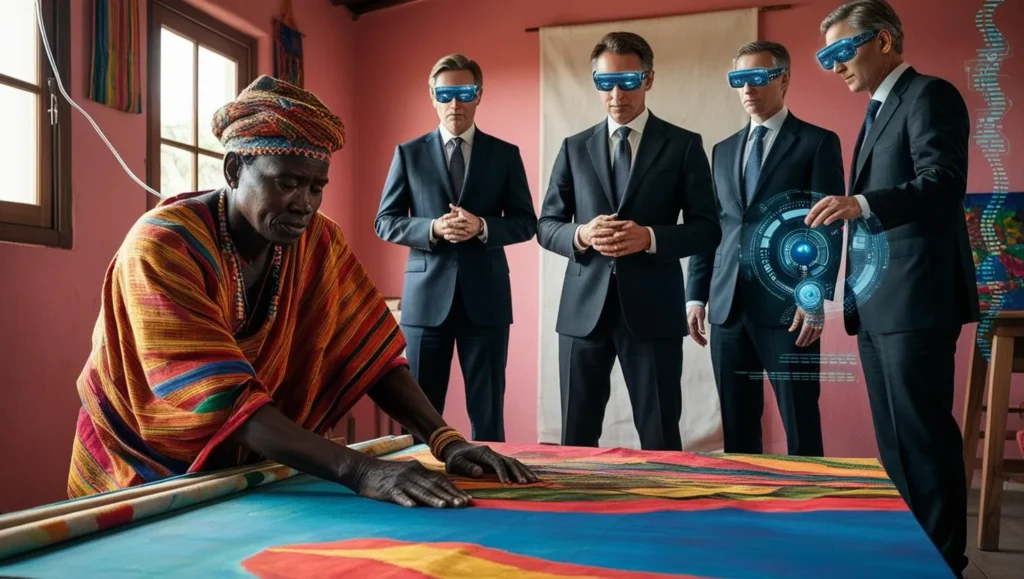In the galaxy of the internet, where algorithms are the new colonizers, artists from the Global South face a fresh wave of conquest: digital colonialism. Beneath the shiny guise of “technological inclusion,” lies a dynamic that echoes the historical inequalities of traditional colonialism. Instead of ships and flags, it’s now servers and digital platforms shaping the cultural destiny of millions.
Encrypted Marginalization
Imagine a vibrant painting fading into unrecognizable shades — that’s how indigenous cultures and traditional artistic expressions are often treated in digital spaces. Global platforms prioritize the tastes and formats of the Global North, relegating the rest of the world to the margins of feeds. How can one compete with the algorithmic aesthetics of the “likeable”?
Big Tech: The New Merchants
Big tech companies monopolize the means of artistic production and distribution, turning digital tools into barriers. With undersea cables connecting hemispheres but not hearts, artists from the Global South often find themselves disconnected from global audiences, while their data is exploited to fatten the coffers of Northern conglomerates.
Data: The New Gold
Digital colonialism, à la “Big Brother,” monetizes surveillance and data extraction, stripping artists of agency over their own work. While tech giants become oracles, trend predictors, and cultural curators, artists are reduced to statistics, visible only as numbers in performance reports.
When Bias Becomes the Curator
Algorithms, despite promises of neutrality, carry the biases of their creators. As a result, voices from the Global South are filtered, distorted, or completely silenced. Art, which should serve as a mirror of humanity, ends up reflecting only the preferences of a few programmers in Silicon Valley.
From Appropriation to Homogenization
If cultural appropriation once involved physical trophies, today it’s digital ideas that are decontextualized and repackaged as “innovations.” Works by artists from the Global South are often diluted and reinterpreted, losing their nuances and original meanings.
Resistance and Digital Rebirth
Amid this storm of bytes, there are glimmers of hope. The “digital disruption” concept emerges as a cry of resistance, calling on artists and peripheral nations to reclaim digital spaces. Collaborative networks, decentralized platforms, and inclusive narratives are the new weapons in this fight for cultural equity.
Conclusion
Digital colonialism is not an inevitable fate. Just as decolonization movements in the past rewrote history, contemporary initiatives can reshape digital spaces. Empowering artists from the Global South is essential to ensure the global art scene is as diverse as the cultures it represents. After all, the digital realm should be a constellation of voices, not a monotonous echo of power and profit.
Victor T. Murari
Art History, Education & Artificial Intelligence | PhD | Advancing Educational and Cultural Narratives through AI Integration

